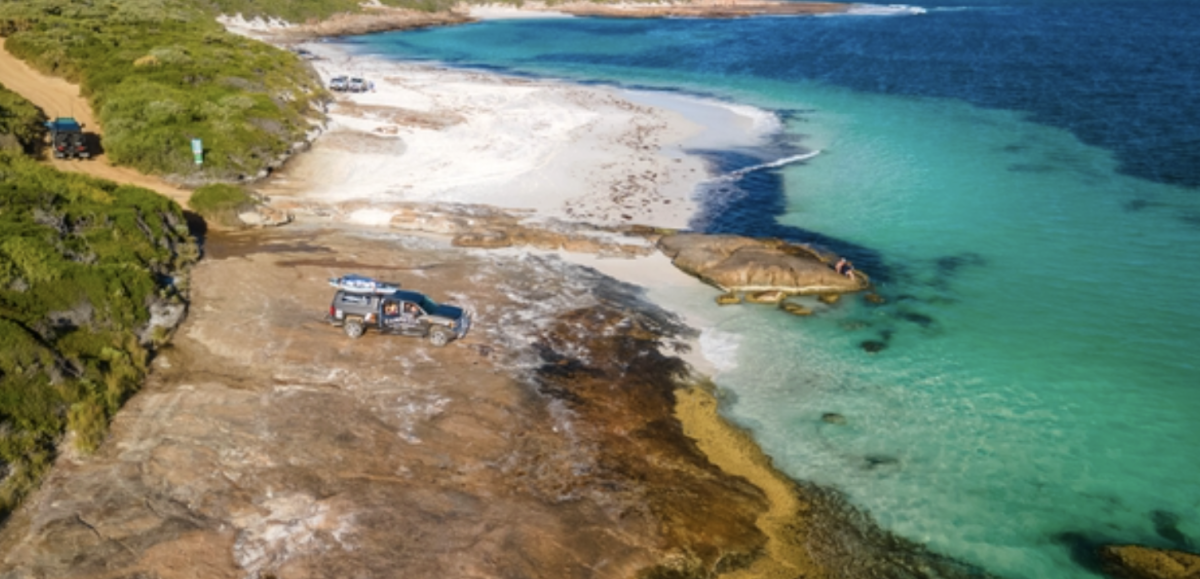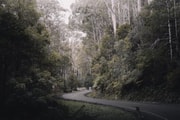
When fierce winter storms battered Western Australia's southern coast earlier this year, they did more than reshape the shoreline. The wild weather stripped away layers of sand from Wharton Beach near Esperance, revealing an extraordinary window into Australia's ancient past—one that predates the pyramids by thousands of years.
What rangers discovered has left archaeologists stunned, but it's also created an urgent problem that's putting this priceless piece of history at risk.
A 7,000-year-old forest emerges from the sand
The tree stumps and peat were first noticed by rangers from the Esperance Tjaltjraak Native Title Aboriginal Corporation (ETNTAC) in August. Yet what they found was far more significant than anyone initially imagined.
'We did some carbon dating on one of the stumps that was exposed, and it came back that it last saw the light of day 7,000 years ago,' Doc Reynolds, a senior cultural advisor, told PerthNow.
To put this in perspective, these ancient wetland forests were thriving when the Great Pyramid of Giza was still 2,500 years in the future. The wild weather revealed an ancient wetland forest and Aboriginal artefacts on Wharton Beach.
Dr Reynolds said the group had also drilled a core sample into the peat, which, incredibly, revealed preserved tree stumps and pollen grains, now being analysed by researchers at Curtin University. 'We're now going through a process of identifying not only the pollen, but any other ancient flora species or even fauna species that were actually living in that wetland system all those years ago,' he said.
Racing against time and tyres
Here's where the story takes a troubling turn. While it's an exciting discovery, there are signs that 4WD drivers who access the beach are driving over it, putting the discovery at risk. 4WD tracks indicate that drivers have been gdriving over the delicate 7,000year-old discovery on a popular beach.
For many 4WD enthusiasts, Wharton Beach has long been a favourite destination. The problem is that some drivers don't realise they're potentially damaging irreplaceable archaeological evidence.
'Leave this particularly special place alone, wait for it to be covered over,' Ingrid Ward, a geo-archaeologist who has been researching the site since 2021, told the ABC.
A cultural treasure under threat
The significance of this find extends far beyond its age. These aren't just old trees—they represent a crucial link to understanding how Aboriginal people lived and interacted with the landscape thousands of years ago.
The preservation of organic materials like peat and pollen is scarce, making this site potentially invaluable for researchers studying ancient Australian environments.
The discovery also highlights the deep connection Indigenous Australians have maintained with country for tens of thousands of years. Rangers from the Esperance Tjaltjraak Native Title Aboriginal Corporation (ETNTAC) were the first to recognise the importance of what the storms had revealed, demonstrating the vital role Traditional Owners play in protecting and interpreting cultural heritage.
Part of a bigger picture
This isn't happening in isolation. Right across Australia, the relationship between 4WD access and environmental protection is being reassessed. Victoria, for instance, has outlawed beach driving except in a dedicated area at Discovery Bay near Portland, while South Australia is considering new laws following recent incidents at both the Yorke and Eyre Peninsulas.
University of the Sunshine Coast researcher Thomas Schlacher warned that 4WD activity on Queensland's beaches is causing 'unequivocal' damage to coastal dune ecosystems. The conversation is clearly shifting towards greater restrictions.
What this means for beach drivers
If you're planning a trip to Western Australia's south coast, it's worth checking current access restrictions before you load up the 4WD. The message from authorities and Traditional Owners is clear: this particular section of Wharton Beach needs to be left undisturbed while research continues.
However, this doesn't mean the end of beach driving in the region. Western Australia still offers numerous spectacular 4WD beaches and tracks. The key is being aware of sensitive areas and respecting cultural and environmental heritage.
For those who love combining their 4WD adventures with a touch of history, this discovery presents fascinating possibilities. As research progresses, there may be opportunities for guided tours or interpretation centres that allow visitors to learn about this ancient landscape without damaging it.[/p]
The bigger questions
This discovery raises important questions about how we balance recreation with preservation. Australia's beaches are deeply ingrained in our national identity, and 4WD access has been an integral part of that culture for generations. But as we learn more about the fragility of these environments and their cultural significance, we're forced to reconsider some long-held assumptions.
The Wharton Beach discovery is also a reminder that there's still so much we don't know about Australia's ancient past. Every storm, every erosion event, every development project has the potential to reveal new chapters in the continent's story. The question is whether we'll be careful enough to preserve these discoveries for future generations to study and understand.
Did you know?
The 7,000-year-old forest at Wharton Beach was preserved because rising sea levels gradually buried it in sediment, creating an oxygen-free environment that prevented decay. This type of preservation is scarce and provides scientists with a unique snapshot of ancient Australian ecosystems.
Looking ahead
Samples of the trees were sent to the University of New South Wales' Radiocarbon Laboratory, where researchers made what senior cultural advisor Doc Reynolds described as 'remarkable' discoveries.
'We're now going through a process of identifying not only the pollen, but any other ancient flora species or even fauna species that were actually living in that wetland system all those years ago,' he said.
The research is ongoing, and there's every possibility that more secrets will emerge from this ancient landscape. What's certain is that this discovery has the potential to significantly advance our understanding of how Aboriginal people lived and how Australian environments have changed over thousands of years.
For now, the message from researchers and Traditional Owners is simple: give this special place the respect and space it deserves. The storms that revealed these ancient treasures also created a race against time to study them before they're covered by sand again or damaged beyond repair.
What do you think about the balance between preserving our ancient heritage and maintaining access to Australia's beautiful beaches? Have you visited any areas where archaeological discoveries have changed how we use the landscape? Share your thoughts and experiences in the comments below.







